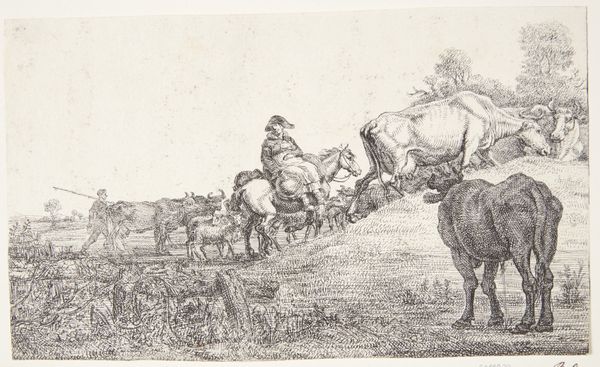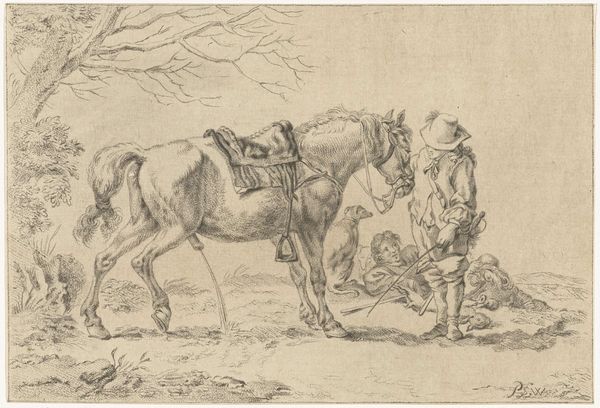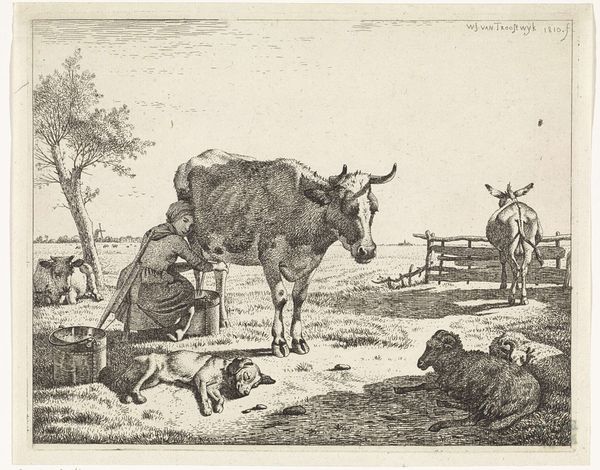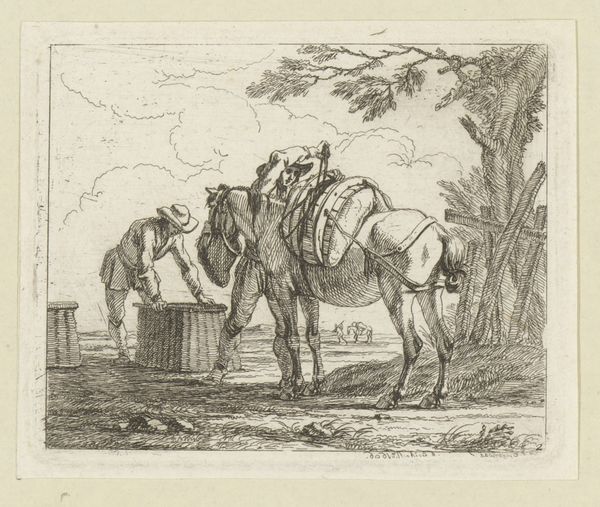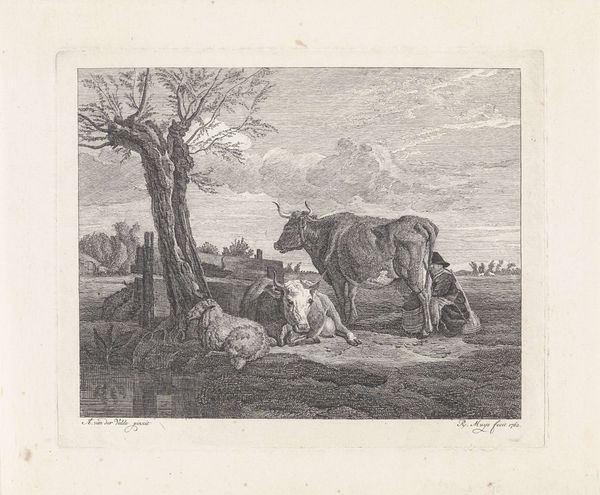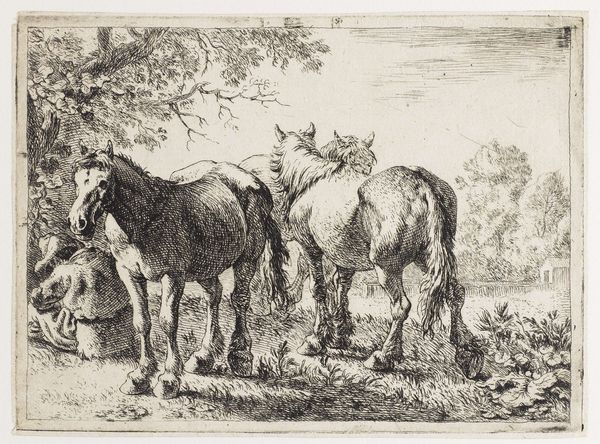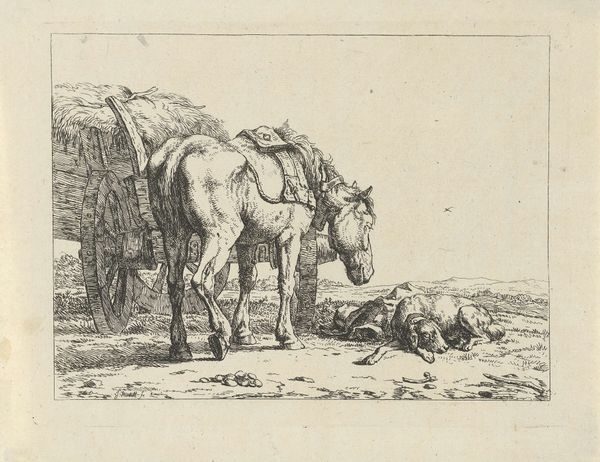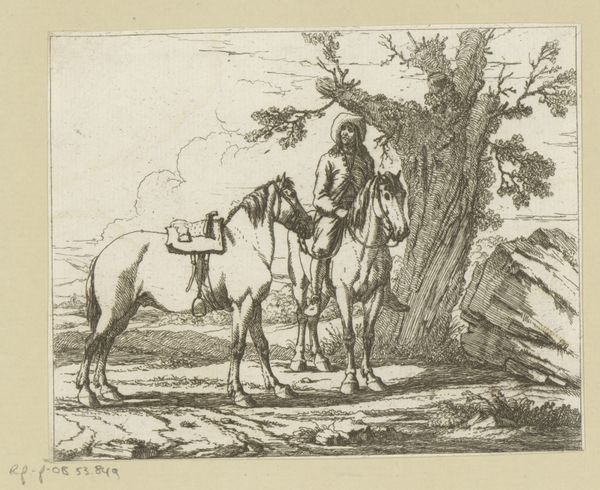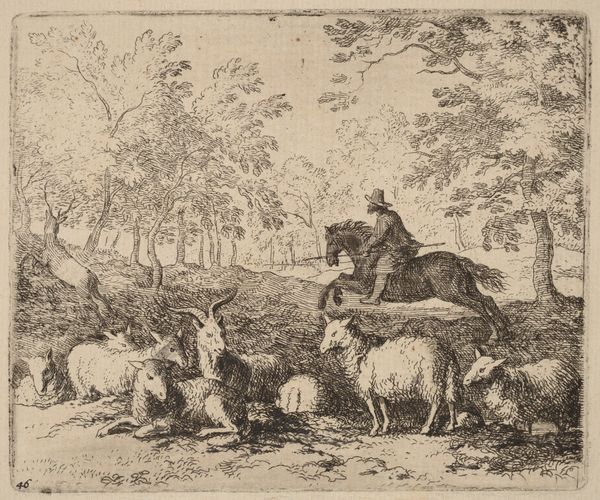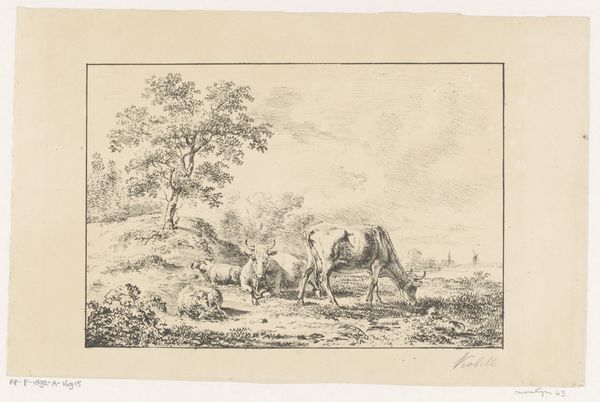
drawing, print, etching, pencil, engraving
#
landscape illustration sketch
#
drawing
# print
#
pen illustration
#
pen sketch
#
etching
#
old engraving style
#
landscape
#
personal sketchbook
#
pen-ink sketch
#
pencil
#
pen work
#
sketchbook drawing
#
genre-painting
#
storyboard and sketchbook work
#
sketchbook art
#
engraving
#
realism
Dimensions: height 162 mm, width 196 mm
Copyright: Rijks Museum: Open Domain
Curator: This etching from 1810 is entitled "Cows by a pollard willow," created by Wouter Johannes van Troostwijk, now housed here at the Rijksmuseum. Editor: It has a strangely calming presence; the etched lines, though simple, create a pastoral scene that's really quite peaceful. There's something honest about its representation. Curator: Van Troostwijk was working during a period of great change in Dutch agriculture. We see here a romanticized view of rural life that was increasingly becoming impacted by urbanization and industrialization. It’s interesting how this print almost idealizes that simpler agrarian lifestyle. Editor: And the materials! An etching. It's a fundamentally reproducible medium. How many impressions were made and distributed? Did these prints disseminate an idealized view of the countryside amongst city dwellers? The materiality of this connects to that desire. Curator: Absolutely. The rise of printmaking coincided with the burgeoning middle class and an increasing interest in landscape art. Works like this allowed a wider audience to engage with representations of nature, reinforcing certain societal values linked to land and ownership. Editor: Look at how the texture of the cows is built up by such dense clusters of lines, compared to the relative openness used to convey distance in the background. It's almost a treatise in economy, a smart allocation of labor. I see how van Troostwijk made his marks to efficiently represent both material and distance. Curator: Van Troostwijk also came from a wealthy merchant family, which enabled him to pursue his artistic interests. It speaks to a changing dynamic where artistic production wasn’t solely dictated by aristocratic patronage. Editor: So, in a way, even van Troostwijk’s background and social standing reflects those shifts in labor and means of production? I find that thought really rich. Curator: It’s almost as though through seemingly bucolic scene, we’re given a small window onto the social landscape of the Netherlands in the early 19th century. Editor: Right. This seemingly quaint depiction of cows, made through repeatable actions of printmaking, gives insight into Dutch societal structures that were anything but fixed.
Comments
No comments
Be the first to comment and join the conversation on the ultimate creative platform.
